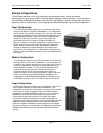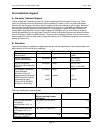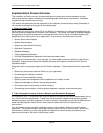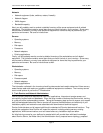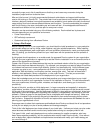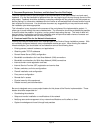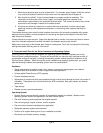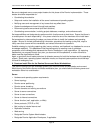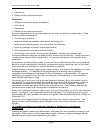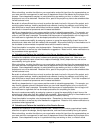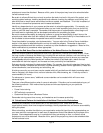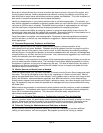
Ÿ Document issues encountered and their solutions
Ÿ Coordinate communication, including project databases, meetings, and conference calls
Set responsibilities and designate who performs which functions and at what times. Ensure that there is
a contact person for each role and responsibility -- this person should be one of the members of the
install team.
Set procedures by documenting the steps your team will take to implement the network infrastructure
plan. Be sure to include troubleshooting information, procedures for backing up systems, ways to notify
users when the system will be unavailable, and contact information for questions.
Establish strategy by including capturing data, issues, solutions, and feedback in a database for use as a
knowledge repository. This database will be the starting point for creating a set of guidelines,
procedures, and knowledge that represents the Domino installation in your organization. By capturing
feedback as you progress through your plan, you team can shift its operations, or order of events to
better meet the organization’s needs.
A well thought out plan should make provisions for disaster recovery. For example, in case a T3
communication line fails due to unforeseen circumstances, there should be a backup T3 or other
communication line that provides redundant service until the original line can resume service; thus
keeping the network functioning.
7. Create or Modify an Existing Disaster Recovery Plan
We can not stress enough how important it is to have an excellent disaster recover plan. Disasters can
be natural events, mechanical failures, and human errors. The following list contains items that any
organization should be prepared for:
Ÿ Power outages
Ÿ Tornadoes, hurricanes, floods, lightening strikes, and other natural disasters
Ÿ Equipment failures such as server hardware, disk drives, network equipment, telephone equipment,
and air conditioning
Ÿ Users or administrators that accidentally delete files or other types of data
Ÿ Users or administrators that may accidentally unplug a server or other vital piece of equipment
Ÿ Server crashes
Ÿ Out of disk space errors
Ÿ Faulty WAN connections such as a T1 or T3 communication line
Ÿ Bandwidth degradation
Ÿ Viruses
Ÿ Sabotage
Each organization’s environment is unique and the costs associated with redundancy for some
companies can be overwhelming. However, mission critical systems should be a primary concern.
Having a single point of failure could be devastating if not crippling to the entire operation of your
company. For example, your company implements Domino and uses it for a sales force automation
application which is mission critical to the overall operation of the entire organization. You would
probably want to make use of multiple database replicas (database copies) to safeguard data and make
it accessible across geographic boundaries. You would also want to make use of Domino’s server
clustering technology to provide high availability and load balancing features to your end users. With
this configuration, there is no single point of failure.
A disaster recovery plan should contain complete detailed documentation for every system to include
servers, network hardware, applications, telecommunications, and tape backup. Documentation should
answer three questions at a minimum:
Lotus Domino Server R5 Implementation Guide June 18, 2001
Page 24




